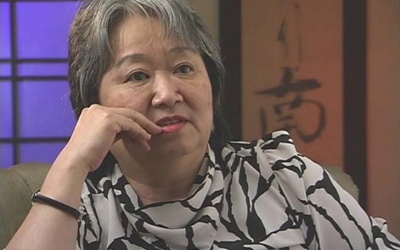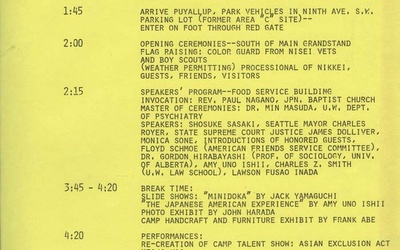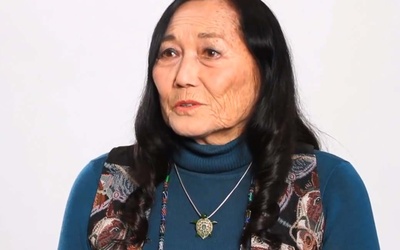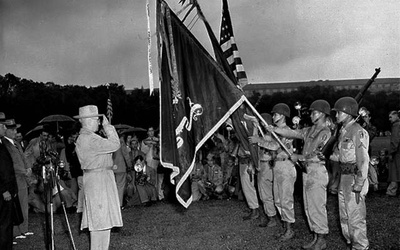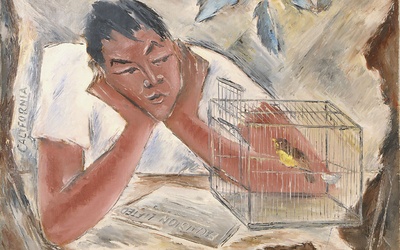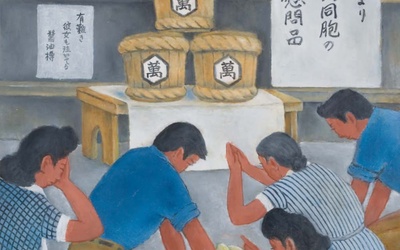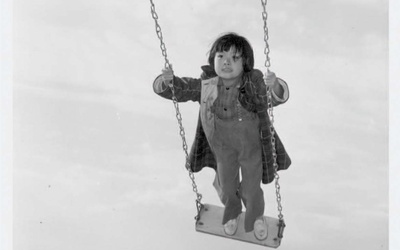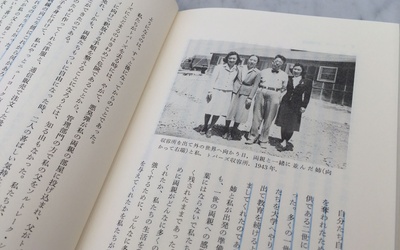Yuri Brockett
@yuri_brockettAfter working at the Japanese Embassy in Tokyo, she moved to the US with her family when her husband studied at a graduate school. In New York, she taught Japanese at a university while raising her children, and then moved to Seattle to study design. She worked at an architecture firm before moving to her current position. She is drawn to the world of children's books, architecture, baskets, stationery, kitchenware, travel, handicrafts, and things that get better and tastier with age. She lives in Bellevue, Washington.
February 2015 Update
Stories from This Author
Chapter 5: A new start after the war: 1945 and after (6)
Aug. 10, 2015 • Yuri Brockett
Read Chapter 5 (5) >> 4. Pain for Children The impact of the internment experience on each child is different, but it seems to vary greatly depending on age, living environment up until that point, whether or not they had a support group, the mental stability of their parents, etc. Since they were put in the internment camps simply because they were Japanese-American, they ended up feeling ashamed of being Japanese-American and guilty about being Japanese-American. However, many who spent …
Chapter 5: A new start after the war: 1945 and after (5)
Aug. 3, 2015 • Yuri Brockett
Read Chapter 5 (4) >> Public hearings - 1981 The hearings, held across the US from July to December, came to Seattle when Mako Nakagawa's father, who was busy thinking about who to invite to his 88th birthday celebration, decided that it was important to testify at the hearings and so he went with his daughter. My father was hard of hearing, so we decided on a signal. I tapped him lightly on the shoulder three times, "Pon, pon, pon," …
Chapter 5: A new start after the war: 1945 and after (4)
July 27, 2015 • Yuri Brockett
Read Chapter 5 (3) >> 3. Breaking the Silence : The Reparations Movement from the 1970s to the 1980s Young second and third generation Japanese Americans, inspired by the African-American civil rights movement and minority movements of the 1960s, also began to voice their support for the creation of Asian studies departments at universities and for the increase in Asian and female faculty. Kashima, who was just a baby at Topaz internment camp, says that by this time he was …
Chapter 5: A new start after the war: 1945 and after (3)
July 20, 2015 • Yuri Brockett
Read Chapter 5 (2) >> 2. Unravelling hidden memories < From the late 1960s > "Farewell to Manzanar" - Jeanne Wakatsuki "Hey, Auntie, I was born in a place called Manzanar. What was it like there?" my nephew asked me out of nowhere. It was the first time I'd heard about Manzanar from anyone other than my family. As I was telling him about the camp, the terrible sandstorms, the terrible food, the games we played, he asked me, "You …
Chapter 5: A new start after the war: 1945 and after (2)
July 13, 2015 • Yuri Brockett
Read Chapter 5 (1) >> Another Battle On July 15, 1946, in front of the 442nd Regimental Combat Unit, including the 100th Infantry Battalion, 1 , which had achieved many great feats, President Truman said on the White House lawn, "You not only fought the enemy, you fought racism. And you won." The 442nd Regimental Combat Unit is the most decorated unit in the history of the U.S. Army, given its length of service and size. However, it has taken …
Chapter 5: A new start after the war: 1945 and after (1)
July 6, 2015 • Yuri Brockett
Read Chapter 4 (6) >> That's right. As Aoki Sachiko wrote on the cover of the previous issue (Children and Books No. 136), the Japanese Americans who left the internment camps kept their wounds from anyone for a long time. The Japanese Americans had done nothing wrong, but the fact that they were put in the camps made them feel shame and guilt, thinking that they might have done something wrong. They were worried that by talking about it, the …
Chapter 4: Concentration Camps in the Wilderness: 1942-1946 — Part 2 (6)
June 29, 2015 • Yuri Brockett
Read Chapter 4 (5) >> 3. 1945 Cancelled Inter-Staff Matches — Early Spring In early spring, Manzanar experiences constant dust storms and light snow, but the boys' basketball team was full of excitement as they prepared for a friendly match against Bishop High School in a nearby town. It was the first time the team would be playing against an opposing school, so the team was very motivated. After getting permission from the Western Defense Command, the Bishop School Board …
Chapter 4: Concentration Camps in the Wilderness: 1942-1946 — Part 2 (5)
June 22, 2015 • Yuri Brockett
Read Chapter 4 (4) >> 2. 1944 Comfort goods arrive from Japan on an exchange ship — Early spring The scent of home arrived on a ship that exchanged prisoners between Japan and the United States. Supplies procured with funds raised in Japan to help Japanese nationals residing in enemy countries arrived via the Red Cross. 1 The first exchange ship brought green tea, while the second ship brought green tea, miso paste, soy sauce, medicine, entertainment items, and books. …
Chapter 4: Concentration Camps in the Wilderness: 1942-1946 — Part 2 (4)
June 15, 2015 • Yuri Brockett
Read Chapter 4 (3) >> Children's daily life—Summer By the time they reached high school age, there were many organized pastimes, such as baseball, basketball, and dance parties, but organized activities for preteens were limited, and they often hung around the camp in groups and caused trouble. So the administration introduced Boy Scout and Girl Scout activities, and gathered boys together to form a tackle football team. Here is a look at the daily life of children from a report …
Chapter 4: Concentration Camps in the Wilderness: 1942-1946 — Part 2 (3)
June 8, 2015 • Yuri Brockett
Read Chapter 4 (2) >> Time to leave Those who answered "yes, yes" to the 27th and 28th questions and were recognized as loyal were encouraged to leave the camps early to join the military or to work or study in Midwestern or Eastern towns. To help Nisei students who had been evicted midway through their studies return to college, the Quaker American Friends Service Committee backed the National Japanese American Student Relocation Council, which quickly got to work, helping …


